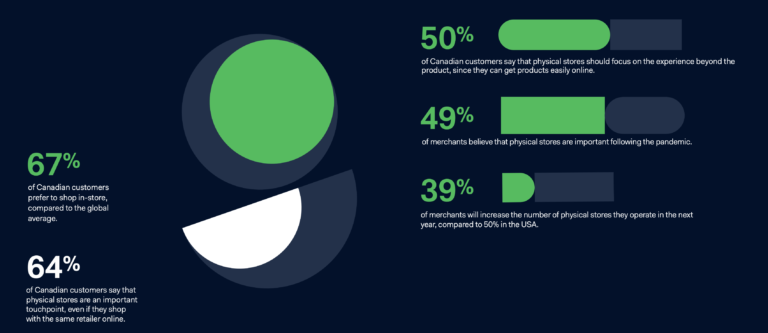
Digital transformation represents a trillion-dollar opportunity for the industry, according to KPMG. And in the face of the global pandemic, Canadian businesses experienced a new age of digital adoption unlike ever before.
Moving forward, there are many opportunities for merchants to connect backend systems and provide a seamless customer experience, as well as build customer loyalty, affirms a new report from payments platform Adyen and KPMG.
The firms’ inaugural Retail Report performed research across two dozen countries, including Canada 2,000 merchants from 500 different companies were questioned on their fears, hopes, strategies, and investments for 2022 and beyond.
According to the report, a majority of merchants in Canada expect to grow by at least 20% this year—a strong showing amidst a market downturn resulting in widespread layoffs. One reason for this optimism is the adoption of “unified commerce,” which integrates digital and traditional retail channels to maximize convenience for the consumer.
For example, customers are more loyal to a brand that allows them to purchase items online and return in-store. Meanwhile, loyalty rewards programs are the primary driver behind consumers downloading a retailers’ app, suggests the report. And if that loyalty card automatically links with the users’ payment card? even better.
The focus on unified commerce is important, says Adyen, because physical environments just aren’t going away. Especially in Canada.
“Despite a large increase in online shopping throughout the pandemic, Canadians remain enticed by in-store experiences,” the report states. “Reflecting this sentiment, 67% of Canadians prefer to shop in a physical store—compared to the global average of 59%. Further, 64% of customers say physical stores are an important touchpoint, even if they shop with the same retailer online.”
Indeed, even smart Canadian e-commerce companies such as Ottawa’s Shopify and Vancouver’s Article made big bets on online shopping that traditional retail snuffed out as soon as the Pandemic ended. Still, the report acknowledges there is ample digital transformation remaining on both the physical and online channels of commerce.
“Digital transformation remains a key priority, accelerated by recent challenges but at the same time more within reach than ever,” the report states. “Consumers continue to drive innovation and flexibility, and businesses are expected to not only keep up, but continue to shape whatever comes next.”
Brick-and-mortar locations can be improved through technology, according to the report. Consider the “endless aisle” shopping strategy, for example. And aim to offer an in-store experience that is distinct from the digital one. Across channels, personalize experiences and grow loyalty through data insights, brand apps, and payments.
Personalized ads, however, are polarizing—a majority of consumers do not enjoy seeing these, the report confirms.



Leave a Reply